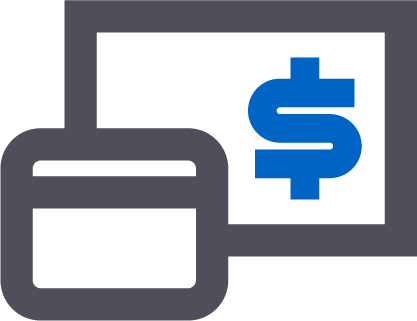- Market Turbulence and Correction: Last week marked one of the worst weeks for U.S. stocks since March 2020, driven by severe tariff announcements and retaliations, pushing the S&P 500 into correction territory and the NASDAQ into a bear market.
- Cautious Optimism Ahead: Despite ongoing challenges like potential earnings revisions and inflation concerns, the market’s oversold conditions and negative sentiment historically set the stage for a rebound, especially if inflation data surprises to the downside.
- Stay Disciplined and Diversified: In times like these, it is easier said than done, but investors should remain committed to their long-term plans and avoid making impulsive decisions amid the heightened volatility.
Last Week
Last week was one for the books—though admittedly, it’s not the kind of book most of us wanted to read. Due to one of the worst two-day losses in U.S. stock market history last Thursday and Friday, Wall Street just endured its toughest week since March 2020. As a result, the S&P 500 moved into correction territory (down over 10%), while the NASDAQ and U.S. small caps have entered bear markets (down over 20%). After challenging weeks like last week, long-term investors should keep in mind that they have weathered similar challenges before. Market corrections are not uncommon, and history shows that diversified portfolios tend to recover over time.
The primary driver was the unexpected severity of new tariff announcements last Wednesday—dubbed by some as "Liberation Day" and by others as "Obliteration Day." The tariffs were far more aggressive than anticipated, potentially marking the highest effective rates since 1909. The situation escalated on Friday when China announced stiff retaliatory tariffs.
One positive note came from Friday’s non-farm payrolls report, which showed job growth well above expectations. The unemployment rate ticked up from 4.1% to 4.2% as more people entered the workforce—a sign of underlying economic resilience.
Last Quarter
Last week also marked the end of the first quarter. While many globally diversified multi-asset portfolios managed to finish the quarter with gains, it was a tough quarter for U.S. stocks—the worst since 2022 in terms of absolute returns. In relative terms, the S&P 500 posted its largest quarterly underperformance compared to the rest of the world in 37 years. By the end of last week, the S&P 500 and non-U.S. EAFE now have similar three-year annualized returns, a reminder of the benefits of global diversification.
Looking Ahead: Potential Catalysts for Stability
This week, the market will focus on tariff negotiation updates and any reciprocal tariff announcements from other nations. The first round of 10% baseline tariffs went into effect on April 5, with broader tariffs scheduled for April 9.
We will also get key inflation data, with CPI on Thursday and PPI on Friday. The CPI is expected to come in at 2.5%, while the Core CPI (excluding food and energy) is expected to hit 3.0%. Rising inflation has so far kept the Fed from cutting rates, despite market expectations. Last week, the Fed Chair notably dropped the word “transitory” from the inflation outlook, indicating a potential for more persistent inflation, especially with tariffs adding upward pressure.
Economic growth remains a concern, with first-quarter GDP tracking at -3%. The term “stagflation” has surfaced more frequently, as expectations grow that economic momentum may slow while inflation picks up. Several major Wall Street firms have increased their recession odds this year.
Earnings revisions could also be in the spotlight, with several large financials reporting on Friday. While earnings season kicks off in earnest the following week, investors should be prepared for possible downward revisions given the recent economic developments.
What Could Go Right This Week?
Despite the negative headlines, there are reasons for cautious optimism. Markets often rebound after sharp declines, especially when price volatility has spiked. In addition, the stock market is currently extremely “oversold,” and sentiment is highly negative—both conditions that historically have set the stage for snapbacks in the market and generally above-average returns in the months that follow.
Additionally, if this week’s inflation data surprises to the downside, it could reignite hopes for a Fed rate cut sooner than expected. Lower energy prices and declining mortgage rates are also bright spots for consumers.
In a Correction: Staying the Course
Even with potential positives, earnings revisions may pose a challenge. Year-over-year earnings growth expectations remain around 10-11%, which, while below previous forecasts, still exceed long-term averages. As prices have already dropped significantly, some companies may take this opportunity to adjust or write down extraordinary items in their upcoming earnings reports.
Given this backdrop, it is important to stay diversified and disciplined. Avoid making hasty decisions in response to market shocks. Expect continued volatility but remember that volatility often brings opportunity.
Final Thoughts: One Step Back, Two Steps Forward
The key to navigating turbulent markets is to remain invested, diversified, and disciplined. While the current environment feels uncertain, it is important to remember that markets have weathered crises before—whether it was the Great Financial Crisis or the COVID downturn. Historically, long-term, diversified investment portfolios have shown resilience, recovering in their familiar “one step back, two steps forward” pattern.
Stay focused on your long-term plan, lean into diversification, and resist the urge to react emotionally to short-term noise. The market’s darkest moments often precede the dawn of recovery.
if you have any questions, please don’t hesitate to reach out to us at strategists@brinkercapital.com or at rusty@orion.com. Thank you for your time and trust.



























